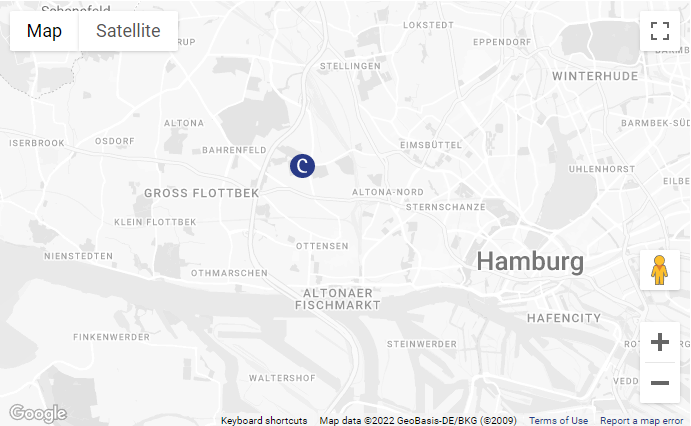Our 360-degree all-round protection through IT service continuity management / information security management / cyber response planning
IT Service Continuity Management (ITSCM), Information Security Management (ISM) and Cyber Response Planning (CRP) are three important disciplines in the field of IT. Learn how these three critical disciplines merge together to form a comprehensive security strategy.

Nearly all of a company's critical business processes are nowadays dependent on functioning IT services. The prolonged failure of IT infrastructures, IT systems or applications very often has fatal consequences for business continuity and can even threaten a company's existence. The requirements for business continuity are therefore always also requirements for IT service continuity.
The possible causes of IT failures are manifold and can be caused by various factors. Starting with hardware failures, e.g. when important components such as servers or network elements fail, through incorrect configurations to external threats such as cyber attacks.
IT Service Continuity Management (ITSCM), Information Security Management (ISM) and Cyber Response Planning (CRP) or Cyber Incident Response Management (CIRM) are three important disciplines in the field of IT. They play a crucial role in ensuring the smooth operation of IT infrastructures, IT systems and applications as well as in dealing with IT disruptions or cyber attacks. Together, they have the goal of maintaining the continuity of IT services, protecting your company data from unauthorised access and being able to react quickly in the event of an emergency.
The possible causes of IT failures are manifold and can be caused by various factors. Starting with hardware failures, e.g. when important components such as servers or network elements fail, through incorrect configurations to external threats such as cyber attacks.
IT Service Continuity Management (ITSCM), Information Security Management (ISM) and Cyber Response Planning (CRP) or Cyber Incident Response Management (CIRM) are three important disciplines in the field of IT. They play a crucial role in ensuring the smooth operation of IT infrastructures, IT systems and applications as well as in dealing with IT disruptions or cyber attacks. Together, they have the goal of maintaining the continuity of IT services, protecting your company data from unauthorised access and being able to react quickly in the event of an emergency.
Consultancy services
We work with you to develop customised solutions tailored to your requirements in this complex IT environment. It goes without saying that we also consider the corresponding interfaces to other management disciplines such as business continuity management, crisis management (KM) and ITIL. With our many years of experience, we support you in the introduction, further development or evaluation of your existing ITSCM, ISM, CRP or CIRM. Our approach is based on internationally recognised standards (as well as best practice models from our many years of project experience.Coaching
When implementing projects, our IT experts always focus on building up in-house expertise. Our aim is for you to learn the necessary knowledge about the management process from us during the implementation of the project and then be able to put what you have learnt directly into practice. New processes are not always met with an undivided positive response. In our many years of experience, the best way to overcome internal scepticism is to raise awareness among employees. Just like the quote from Antoine de Saint-Exupéry: „If you want to build a ship, don't drum up men to procure wood, assign tasks and divide up the work, but teach the men to yearn for the wide, endless sea“ – Feel free to contact us if you need support in preparing and implementing awareness measures.What are the differences and synergies between ITSCM, ISM and CRP?
The three disciplines are closely related to each other and the differences lie primarily in the specific areas of responsibility.ITSCM focuses on ensuring the availability of your IT services in line with business requirements. The IT services required for your business operations are not interrupted, or only for a short time, during the transition to emergency IT operations and your company's economic existence remains secure even in the event of a major incident. This includes, for example, the creation of restart and recovery plans and the implementation of redundant hardware components or network elements. This means that in the event of an IT failure, alternative solutions can be activated immediately to ensure uninterrupted business operations.
While ITSCM ensures the continuity of IT services, ISM focuses on the protection of all types of information, whether in digital or physical form, against misconfiguration, unauthorised access, manipulation and theft. In particular, this involves the protection of sensitive company data, personal identification data and intellectual property. It includes measures such as encryption, access controls and monitoring systems to ensure the confidentiality, integrity and availability of sensitive information. However, classic information security risks include not only intentional acts, but also elementary threats such as fire, water, storms, earthquakes and failed software updates.
Cyber Response Planning (CRP) complements these two disciplines with a proactive approach to managing cyber attacks. CRP deals with the development and continuous improvement of Cyber Incident Response Management (CIRM). This involves developing strategies to be able to react quickly to cyber incidents, contain them and minimise the damage. It includes detailed action plans and response schemes (playbooks) to enable rapid and efficient action in the event of an IT security incident. An important element here is also the training of employees, because in the context of cybercrime, employees are not only a risk, but also the greatest asset. Well-trained employees are better able to recognise suspicious activity, report security incidents effectively and take the necessary measures to minimise damage.
ITSCM, ISM and cyber response planning are three management disciplines that are closely interlinked and benefit from each other. The differences between ITSCM, ISM and CRP lie in their respective focal points and methods, but they complement each other perfectly to ensure comprehensive protection for your IT infrastructure, IT systems and applications. Together, they have the goal of maintaining the continuity of IT services, protecting your company data from unauthorised access and being able to react quickly in the event of an emergency. While ITSCM focuses on maintaining IT operations, ISM concentrates on protecting information as a corporate asset and CRP on responding to cyber incidents.
With the implementation of ITSCM, ISM and CRP, you send a clear signal of reliability to customers and contractual partners - even in the event of a critical IT incident.






